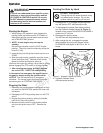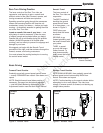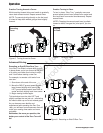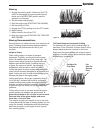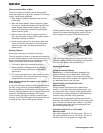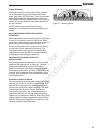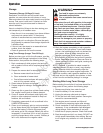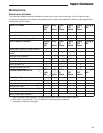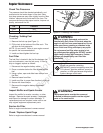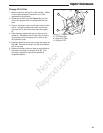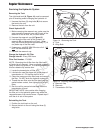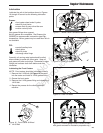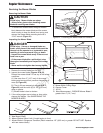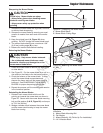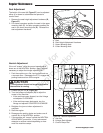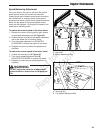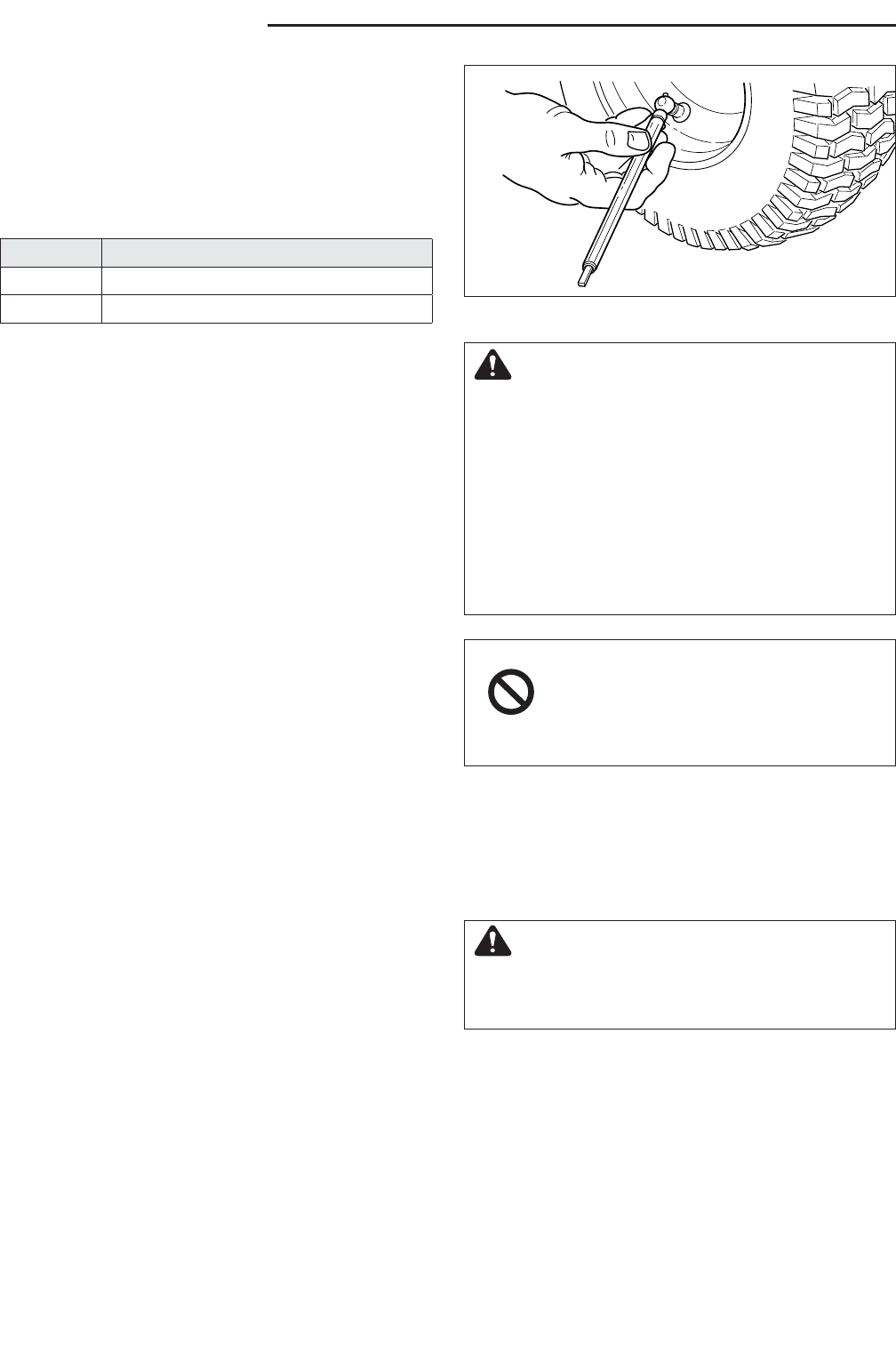
22
www.snapperpro.com
Regular Maintenance
Checking / Adding Fuel
To add fuel:
1. Remove the fuel cap (see Figure 1).
2. Fill the tank to the bottom of the filler neck. This
will allow for fuel expansion.
NOTE: Do not overfill. Refer to your engine manual
for specific fuel recommendations.
3. Install and hand tighten the fuel cap.
Fuel Filter
The fuel filter is located in the fuel line between fuel
tank and carburetor, near the fuel pump. If filter is
dirty or clogged, replace as follows:
1. Disconnect the negative battery cable.
2. Place a container below the filter to catch spilled
fuel.
3. Using a pliers, open and slide hose clamps from
fuel filter.
4. Remove hoses from filter.
5. Install new filter in proper flow direction in fuel line.
6. Secure with hose clamps.
7. Reconnect the negative battery cable when
finished.
Inspect Muffler and Spark Arrester
Inspect the muffler for cracks, corrosion, or other
damage. Remove the spark arrester, if equipped,
and inspect for damage or carbon blockage. If
replacement parts are required, make sure to use
only original equipment replacement parts.
Service Air Filter
Refer to engine manufacturer’s owners manual.
Check / Replace Spark Plugs
Refer to engine manufacturer’s owners manual.
WARNING
Gasoline is highly flammable and must be
handled with care. Never fill the tank when the
engine is still hot from recent operation. Do not
allow open flame, smoking or matches in the
area. Avoid over-filling and wipe up any spills.
Do not remove fuel filter when engine is hot,
as spilled gasoline may ignite. DO NOT spread
hose clamps further than necessary. Ensure
clamps grip hoses firmly over filter after
installation.
Do not use gasoline containing
METHANOL, gasohol containing more than
10% ethanol, gasoline additives, premium
gasoline, or white gas because engine/fuel
system damage could result.
WARNING
Replacement parts must be the same and
installed in the same position as the original
parts or fire could result.
Figure 12. Checking Tire Pressure
Check Tire Pressures
Tire pressure should be checked periodically, and
maintained at the levels shown in the chart. Note
that these pressures may differ slightly from the “Max
Inflation” stamped on the side-wall of the tires. The
pressures shown provide proper traction, improve cut
quality, and extend tire life.
Tire Pressure
Front N/A
Rear 15 psi (1,03 bar)
Not for
Reproduction



